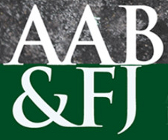Abstract
This paper examines the nature of the taxation profession in Australia and its development over the past three decades and then suggests a framework to analyse important initiatives that have taken place during this period. Using secondary sources and the organizing principles of State, Market and Community (Puxty et al., 1987), we begin with the subject of tax policies and legislation introduced by the state and its impact on the tax profession in Australia. We follow this with a discussion relating to the recognition of Australian tax practice as a profession. The paper then focusses on two key areas of professional development during the last three decades, namely: tax law and tax administration. The paper finds interesting issues relating to professionalization of taxation in Australia. With the involvement of the state, market and the society over the last three decades, there is a requirement to recognise taxation practice as a profession in Australia. The paper suggests that the establishment of the Tax Practitioners Board[1], a statutory body to regulate the taxation profession in Australia, in conjunction with approved professional associations, may have enhanced the effective maintenance of the tax profession which has contributed to social, political and economic development in Australia.
[1] The Minister for Revenue and Financial Services appoint the Board, so there is some degree of control by the state.
Keywords: Australia, Taxation Profession, Australian Tax Office, Australian Taxation Institute, State, Market, Community
How to Cite:
Curran, M. & Yapa, P. W., (2021) “Examining the Taxation Profession in Australia – A Framework”, Australasian Accounting, Business and Finance Journal 15(3), 3-22. doi: https://doi.org/10.14453/aabfj.v15i3.2
Downloads:
Download PDF
412 Views
629 Downloads

